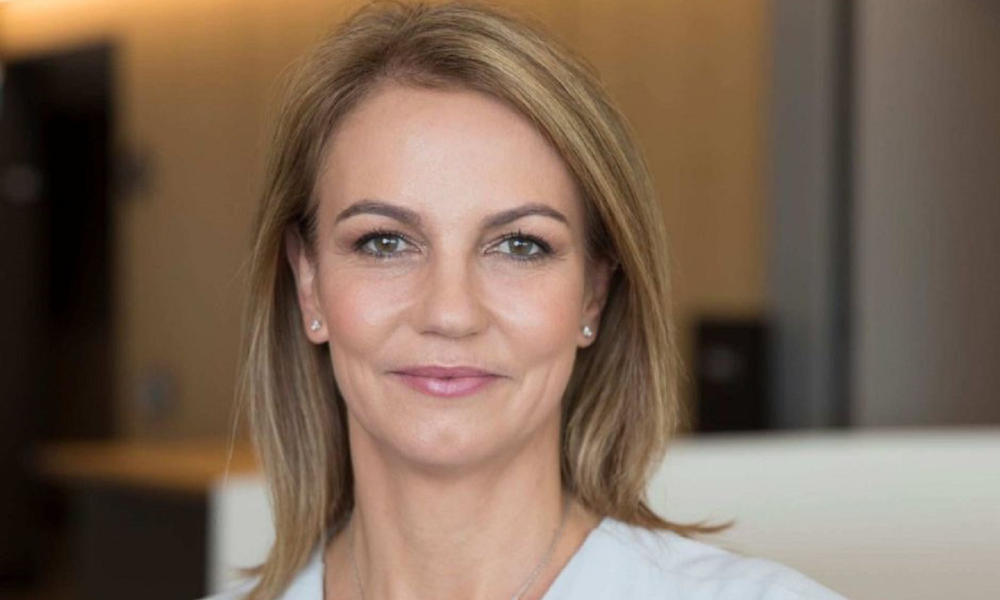Sydney property values could fall 25%

If the RBA follows market pricing, the highly leverage Sydney property market could see the highly leveraged Sydney property market come toppling down and put the country into recession, a leading economist has warned.
The official cash rate has increased by 225-basis points this year as the RBA works to tame inflation, which it expects to peak at 7.75% over 2022. The last four outsized increases have taken the cash rate to 2.35%, and the RBA has indicated further increases are likely.
Jo Masters (pictured above), the chief economist at Australian financial services company Barrenjoey, told the Australian Financial Review that if the RBA lifts interest rates as aggressively as markets expect, this will cause a “material” downturn in property prices and tip the economy into recession.
Masters’ comments were made at the AFR Property Summit, held on Monday, September 19.
Read next: Headlines about house price falls ignore the small print
Markets have priced in a cash rate of 3.3% by the end of 2022, expecting it will peak at 3.9% in April 2023. NAB said on Friday it expected a fifth consecutive 50-basis point rise in October, followed by a 25bp rise in November, taking the cash rate to 3.10%.
“Our modelling suggests that if the Reserve Bank follows market pricing, we will have an economy in recession and we will have house prices down materially,” Masters said.
Her comments follow recent comments made by RBA governor Philip Lowe that the pace of rate hikes would soon slow. The case for outsized rate hikes was becoming weaker, Governor Lowe told the federal parliament economics committee on Friday. The RBA’s October board meeting would focus on whether a 25 or 50-basis point hike was necessary, he said.
Masters said Barrenjoey expects the RBA to halt interest rate increases once the cash rate hits 2.85%. This was well below consensus estimates, and just 0.5% percentage points above its current level of 2.35%, she said.
A 2.35% cash rate is consistent with a 25% fall in the “very leveraged” house Sydney property market, and a 16% correction in values nationwide, Masters told AFR.
“It will be the largest and the longest house price correction in modern history. It is, of course, coming off one of the largest rallies we’ve seen, so in terms of the level of house prices, it takes house prices back to 2019 levels,” Masters said.
If the RBA raises interest rates in line with market expectations, Barrenjoey estimates property prices would fall by a further 3% to 5%.
“I think one of the greatest learnings for economists from the pandemic was just how powerful interest rates are for the housing market,” Masters said.
Read next: Expensive houses to be hit worst, borrowing capacity to fall
In contrast to Masters’ comments, Terry McCrann, a business commentator with The Australian, said in his column on Tuesday that hysteria over supposedly catastrophic falls in property prices should end.
The cash rate, formerly 0.10%, offered borrowers all but free money, and the current 2.35% was only slightly worse, he said. For home loan borrowers, the interest rate was still a “negative real interest rate”.
Despite recent price falls, which could be termed as “mild”, McCrann said house prices were generally “ludicrous multiples of incomes”.
House prices might have fallen 10-15% since the RBA started hiking interest rates, possibly 20% in Sydney.
But McCrann said that was off the back of prices which according to ABS, had increased between 65% and 120% (Brisbane and Sydney respectively) down the east coast since 2011. According to ABS figures, the average for Australia was 84%, which McCrann said was almost in line with the 86% average property price rise in Melbourne over the ten years.
“So, if house prices have fallen 15% – and that’s by no means clear – Sydney prices would still be nearly 90% up on 2011 and Melbourne prices by nearly 60% up,” he said.
Added to that, the vast majority of homeowners would still be sitting on “huge tax-free capital gains”, which were “way ahead of ordinary inflation” over that time, McCrann said.
According to a CoreLogic August report, the national home value index fell 1.6%, the largest month-on-month decline since 1983. It marked a fourth consecutive monthly fall, with the national average median value now sitting at $738,321.
Sydney continued to lead the downswing, with values falling 2.3% over the month, with the median value sitting at $1.066m, CoreLogic said.



